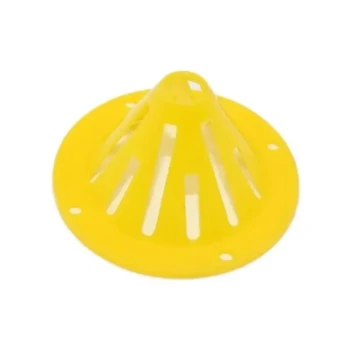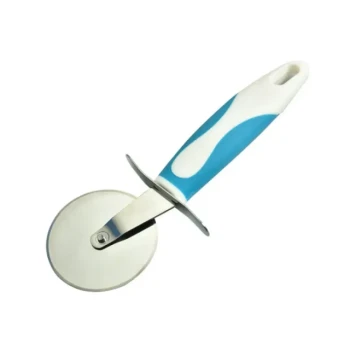At the start of the trial, all bee colonies were meticulously standardized to create a uniform and healthy baseline. The setup involved 30 colonies, each established from a 5-frame nucleus colony, all headed by genetically related queens, and equalized for population, brood, and food stores before receiving any preventative treatments.
The core principle behind these starting conditions was to eliminate as many variables as possible. By ensuring every colony began with identical strength, genetics, and health status, researchers could be confident that any observed differences later in the trial were due to the variables being tested, not pre-existing imbalances.
Establishing a Uniform Baseline
To ensure a fair comparison, the first priority was to make every colony as identical as possible. This involved standardizing their structure, genetics, and resources.
Colony Structure and Size
All 30 colonies were created by transferring 5-frame nucleus colonies (nucs) into larger deep single-box hives. They were arranged in pairs, with the hive entrances splayed in different directions to reduce bees drifting between colonies.
Genetic Uniformity
To minimize genetic variability, all colonies were headed by recently-mated queens from the same mother. This ensures that behavioral traits and biological responses were as consistent as possible across the entire trial group.
Resource and Population Equalization
Each colony was actively managed to achieve identical strength. This was done by swapping combs between hives until each one contained exactly three frames of brood, one frame of honey/pollen, and one frame of drawn comb. Any remaining population imbalances were corrected by shaking in additional bees.
Proactive Health Management
A healthy start is critical for any trial, as disease can skew results. The researchers took preventative steps to ensure all colonies were free from common ailments.
Disease Prevention
Before the trial officially began, all colonies were treated as a preventative measure. Each received a drench of sugar syrup containing fumagillin (for Nosema) and Oxytetracycline (OTC) (for European Foulbrood).
Initial Health Confirmation
This preventative treatment was administered only after a thorough inspection confirmed that all colonies were already free of visible signs of disease. This establishes that the colonies were healthy at the onset and the treatment was purely prophylactic.
Standardized Assessment Methods
Measuring the starting point accurately is just as important as creating it. A consistent grading method was used to quantify the initial strength of each colony.
Grading Colony Strength
The strength of each colony was graded by tipping the hive box back and counting the number of interstices (the spaces between the frames) that were filled with bees.
Ensuring Consistency
To reduce variability in the grading process, this assessment was performed by a single person. Furthermore, it was done early in the morning before the bees' cluster had broken for the day, ensuring a more accurate and comparable population measurement.
Why These Conditions Matter for Trial Integrity
This rigorous standardization is not just academic; it is the foundation of a trustworthy experiment. By controlling these initial conditions, the results of the trial gain meaning and reliability.
- If your primary focus is scientific validity: This setup ensures that differences observed at the end of the trial can be confidently attributed to the treatment or variable being tested.
- If your primary focus is practical beekeeping: Adopting a similar equalization process allows for a fair and reliable test when comparing different feeding strategies, hive equipment, or management techniques in your own apiary.
Ultimately, a well-defined and controlled start is the most critical step in drawing meaningful conclusions from any beekeeping trial.
Summary Table:
| Aspect | Standardized Condition |
|---|---|
| Number of Colonies | 30 |
| Colony Source | 5-frame nucleus colonies |
| Queen Genetics | All from the same mother |
| Brood Frames | 3 frames per colony |
| Food Stores | 1 frame of honey/pollen |
| Health Status | Prophylactic treatment for Nosema & EFB |
Ready to run a reliable trial in your own apiary? The principles of standardization and health management are key to valid results. HONESTBEE supplies commercial apiaries and beekeeping equipment distributors with the high-quality, consistent supplies needed to achieve this level of control. From durable hive boxes to essential health treatments, our wholesale-focused operations ensure you have the reliable equipment for meaningful experimentation. Contact HONESTBEE today to equip your apiary for success.
Related Products
- Long Langstroth Style Horizontal Top Bar Hive for Wholesale
- Extra Wide Stainless Steel Honey Uncapping Fork with Scraper Beekeeping Tool
- Professional Galvanized Hive Strap with Secure Locking Buckle for Beekeeping
- Professional Stainless Steel J-Hook Hive Tool
- Electric Flatting and Embossing Machine with Tray for Beekeeping
People Also Ask
- Which is the best hive to buy? Langstroth vs. Top Bar for Your Beekeeping Goals
- What are the advantages of a Top Bar Hive? A Natural, Low-Stress Approach to Beekeeping
- What are the advantages of a top bar hive? Simpler, Bee-Centric Beekeeping for All
- How can bees be introduced into a top bar hive? A Step-by-Step Guide for a Successful Start
- What are the benefits of a top bar hive? A Natural, Low-Impact Approach to Beekeeping



















